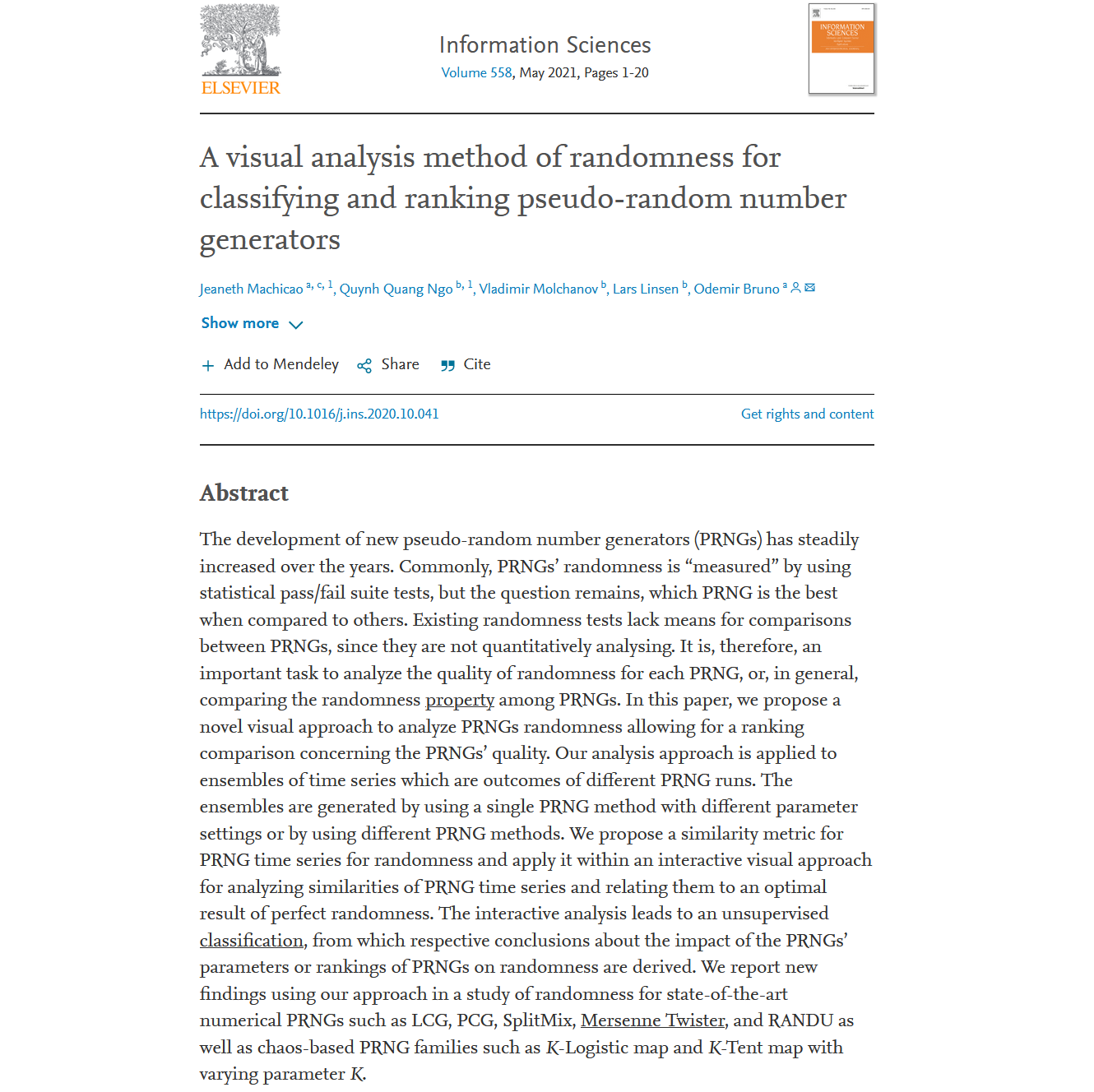A Visual Analysis Method of Randomness for Classifying and Ranking Pseudo-Random Number Generators

Venue. IS (2021)
Abstract. The development of new pseudo-random number generators (PRNGs) has steadily increased over the years. Commonly, PRNGs’ randomness is “measured” by using statistical pass/fail suite tests, but the question remains, which PRNG is the best when compared to others. Existing randomness tests lack means for comparisons between PRNGs, since they are not quantitatively analysing. It is, therefore, an important task to analyze the quality of randomness for each PRNG, or, in general, comparing the randomness property among PRNGs. In this paper, we propose a novel visual approach to analyze PRNGs randomness allowing for a ranking comparison concerning the PRNGs’ quality. Our analysis approach is applied to ensembles of time series which are outcomes of different PRNG runs. The ensembles are generated by using a single PRNG method with different parameter settings or by using different PRNG methods. We propose a similarity metric for PRNG time series for randomness and apply it within an interactive visual approach for analyzing similarities of PRNG time series and relating them to an optimal result of perfect randomness. The interactive analysis leads to an unsupervised classification, from which respective conclusions about the impact of the PRNGs’ parameters or rankings of PRNGs on randomness are derived. We report new findings using our approach in a study of randomness for state-of-the-art numerical PRNGs such as LCG, PCG, SplitMix, Mersenne Twister, and RANDU as well as chaos-based PRNG families such as K-Logistic map and K-Tent map with varying parameter K.
Link to this page:

